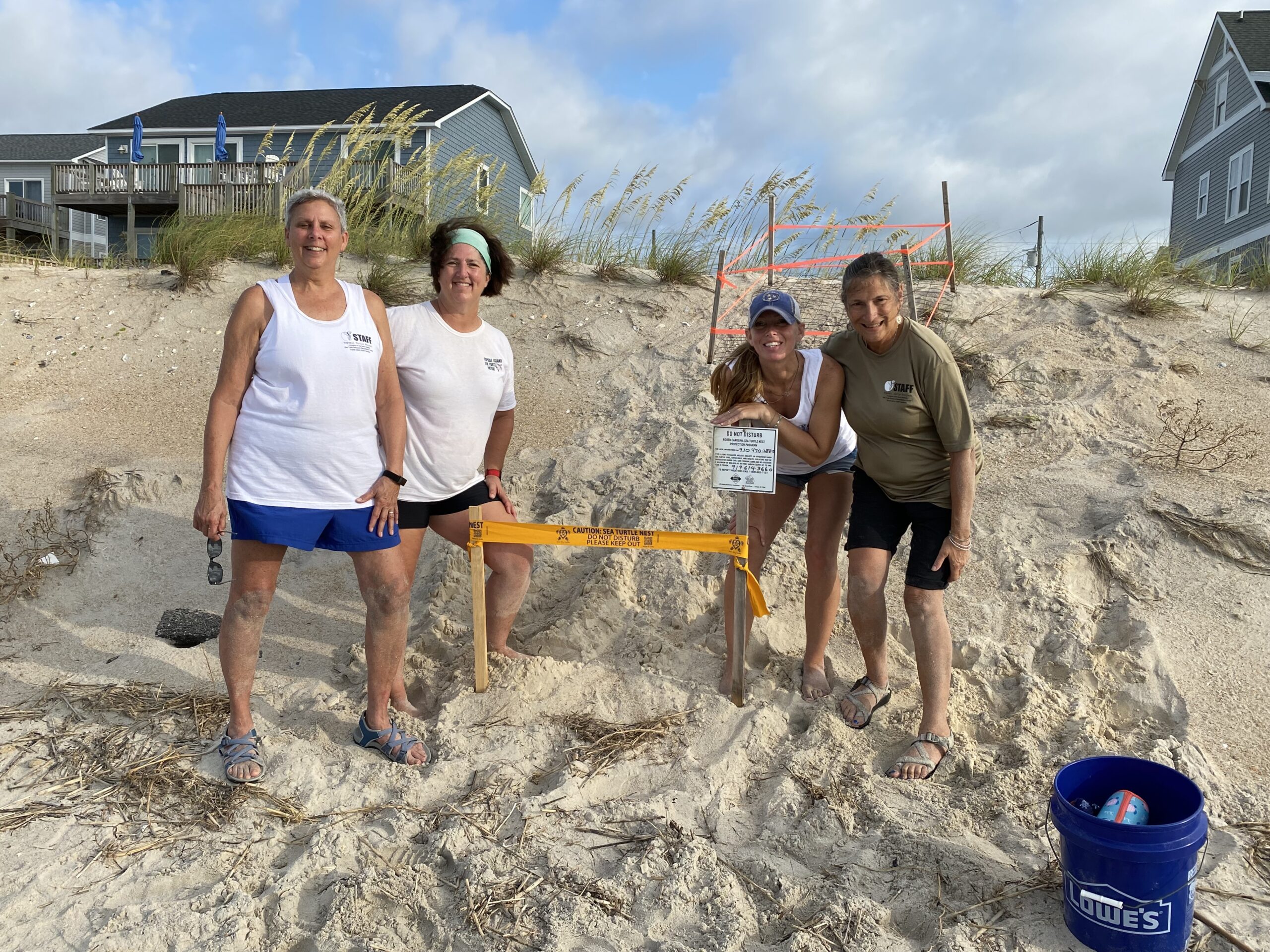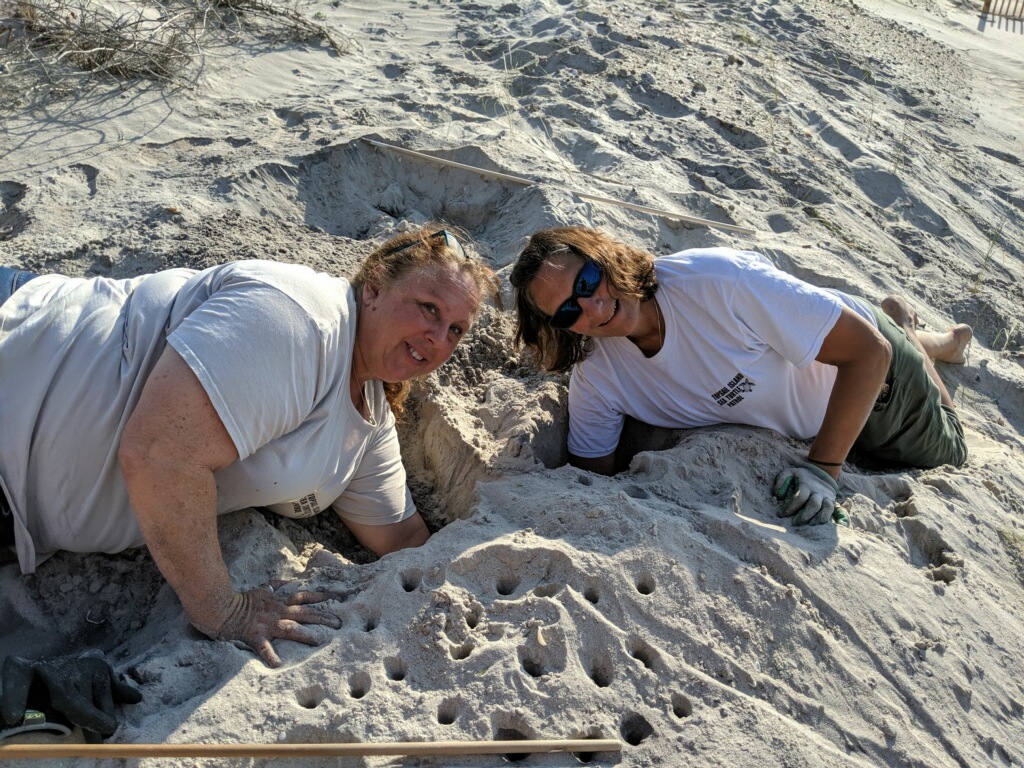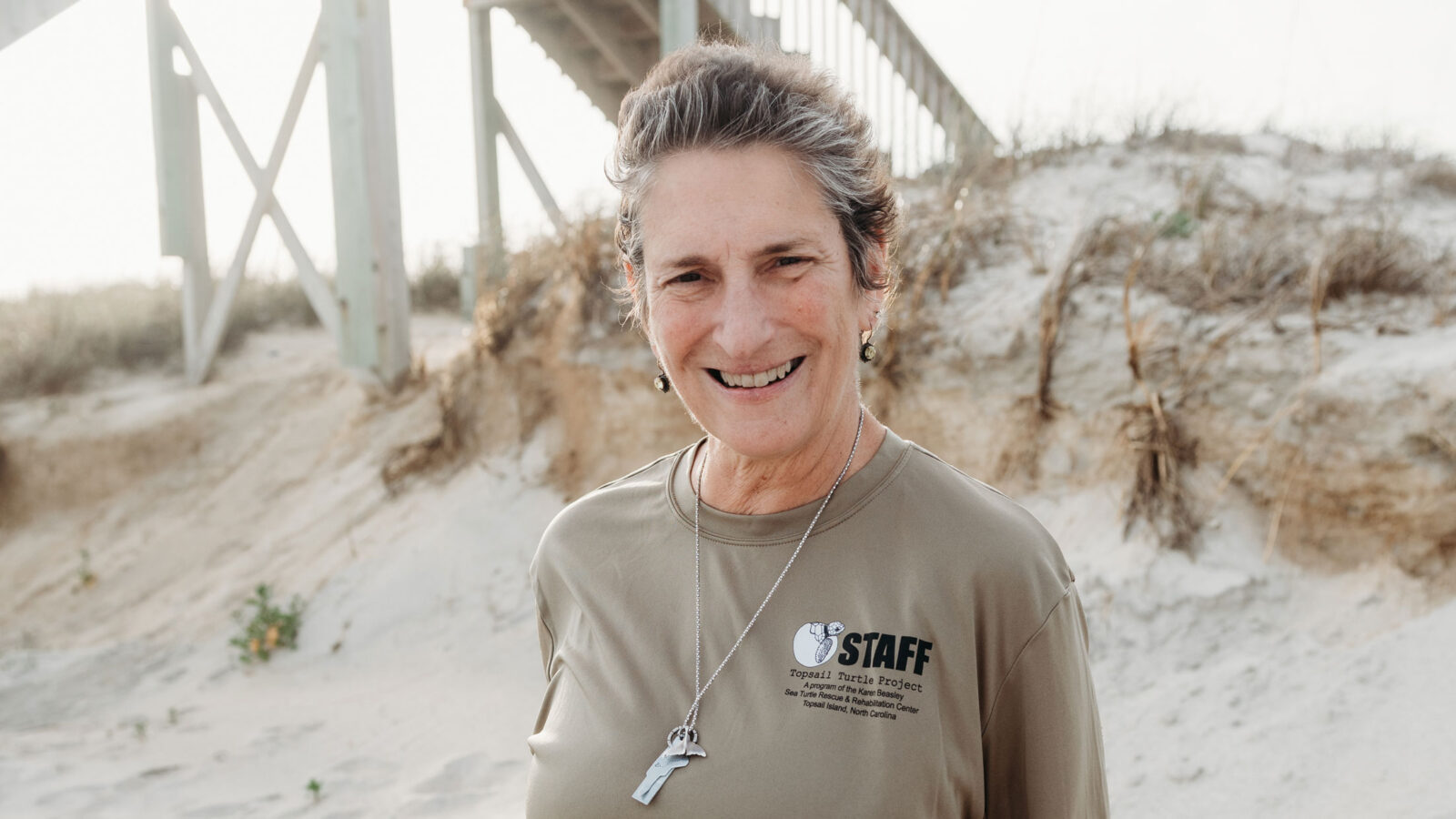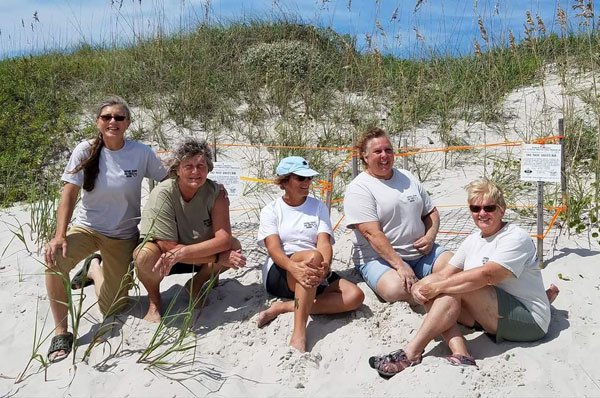A dozen years ago, Marie (Schneller) Palmer ’71 found a new calling on the shores of North Carolina. As a volunteer, she helps to save endangered sea turtles.
After 33 years as a critical care nurse in Massachusetts, Marie (Schneller) Palmer ’71 moved to North Carolina with her husband, Jeffrey, in 2013 and started providing medical care of a different sort. She helps to rescue and rehabilitate endangered sea turtles.
North Carolina’s sandy shores attract nesting loggerheads. Greens, leatherbacks, Kemp’s ridleys, and—once in a blue moon—hawksbills swim its waters. These majestic species have endured centuries of overfishing, habitat destruction, and pollution. Some hopeful signs are finally emerging, such as increasing numbers of nests in North Carolina, thanks to critical legal protections and the ongoing efforts of an army of hands-on professionals and volunteers like Marie.
“I feel totally rejuvenated in my new career as a turtle person,” she says. We caught up with her as she was prepping for the busy spring season, which kicks off with giving public tours of the hospital. The turtle hospital, that is.
You’re part of a sea turtle conservation effort that runs from Cape Cod to Florida. Can you tell us about it?
I volunteer at the Karen Beasley Sea Turtle Rescue & Rehabilitation Center in Surf City, about a 15-minute drive from my home in Sneads Ferry. We protect turtles on the 26 miles of beaches on Topsail Island. The Beasley family had a beach house here back in the ’70s and found a nesting turtle. They tried to report it to the authorities and were told, “Oh, there aren’t turtles on Topsail.” So, as a mother-daughter team, Jean and Karen Beasley started tracking nesting turtles and finding injured turtles, too, which they’d take care of in their garage. Karen then launched the Topsail Turtle Project in 1990 in a 900-square-foot facility. After her early death, Jean took over. The family and community raised funds for a new 13,000-square-foot research center and hospital, named for Karen, which opened to great excitement in 2013. People really love turtles.
How did you go from human caregiver to turtle caregiver?
When we vacationed in North Carolina with our kids in the ’90s, we visited that same 900-square-foot hospital a couple of times and it fascinated me. So, when we moved here, I volunteered as a walker. From May through August, walkers cover an assigned mile early each morning looking for sea turtle tracks—what’s left behind after a female goes up on the beach. That’s how we find the nests. I was then asked to be a coordinator. There are three of us, coordinating six miles at the very northern part of the island. We’re on call 24/7. We have a lot of fun together.
The coordinators have a busy summer ahead protecting turtle nests and hatchlings, right?
Yes. When we get a call that there are tracks, we head out. If we find a nest, we remove one egg to send to the University of Georgia—they’ve been doing DNA studies on sea turtles since 2010—then we cover up the rest and mark the site with stakes. Sometimes we find a nest that’s too close to the water and have to move it first, so it won’t wash out. We put wire over all the nests to keep predators out and add signs from the North Carolina Wildlife Resources Commission that say, basically, “Don’t mess with this nest.” You can get fined and even prison time for disturbing sea turtles because they’re protected by the Endangered Species Act.
We hear a lot about artificial lights messing things up for turtles. Is that a problem on Topsail?
Lights are a huge issue here. Every inch of this beach is being built on, and the hatchlings go toward the brightest light. Hopefully the brightest light is the horizon—not necessarily the moon, which is what everyone thinks, but the white caps. If the hatchlings see a light behind them that’s even brighter, they will go the wrong way. We put landscape fabric around the back of the nest to shield it from house and street lights and make ramps to direct them toward the water. We also go up to the beach houses and explain the problem. Most people are more than happy to turn off their lights. Otherwise, we might get calls at 11 o’clock at night: “There’s baby turtles in my driveway!”
Where do the hatchlings go?
Most of them go to the Sargasso Sea, way out in the Atlantic, where there is a huge sargassum seaweed patch that gives them food and protection. (Sea turtles’ early lives used to be referred to as “the lost years” because scientists didn’t know where they were.) We then won’t see our Topsail turtles again until they’re 30 years old and reproductively mature. They like to return to their “natal” beach.
You work at the hospital one day a week, too. Why do turtles end up there?
The three main reasons are cold stunning, boat strikes, and fishing—when the turtles get hooked by mistake. Cold stunning is the biggest issue. It happens when turtles stay too long in their northern foraging grounds in the fall and don’t migrate early enough to warmer temperatures to the south. They’re cold-blooded, so they become the temperature of their surroundings. They go into shock and float to the top of the water and get a lot of complicated medical problems. We take in lots of cold-stunned turtles from Cape Cod every fall. Most of them are juvenile greens and Kemps. They’re flown in by a volunteer organization called Turtles Fly Too. We usually get 30 or 40 a season, and maybe 40 more from our Carolina shores. Once a turtle has recovered, we release it.
What’s a great day at work for a turtle rescuer?
Well, when we have a really good crowd of visitors on the beach and they’re following directions, and then we have a picture-perfect hatching. The hatchlings just go right down the ramp all in one group and head for the water. They don’t have any misorientation. We ask everyone watching to put their phones away. No electronics. Just enjoy the moment. Ten or 15 minutes and it’s all done. Yeah. I come home from that feeling pretty good.
Turtle Etiquette from the Pros
- Turn off outdoor beach house lights and close drapes and blinds on the ocean side. Switch to amber lights (turtles can’t see the amber light wavelength).
- Fill in any holes in the sand before you leave the beach. Turtles fall in and get stuck.
- Bring in your beach furniture. Turtles get entangled.
- Knock down your sandcastles before you leave the beach.
- Keep the beaches free of litter and eliminate single-use plastic.
- If you are lucky enough to see a turtle laying eggs or baby turtles hatching, keep quiet and stay at a distance. Do not use lights or a flash. Call local authorities to report the sighting and follow their directions!




